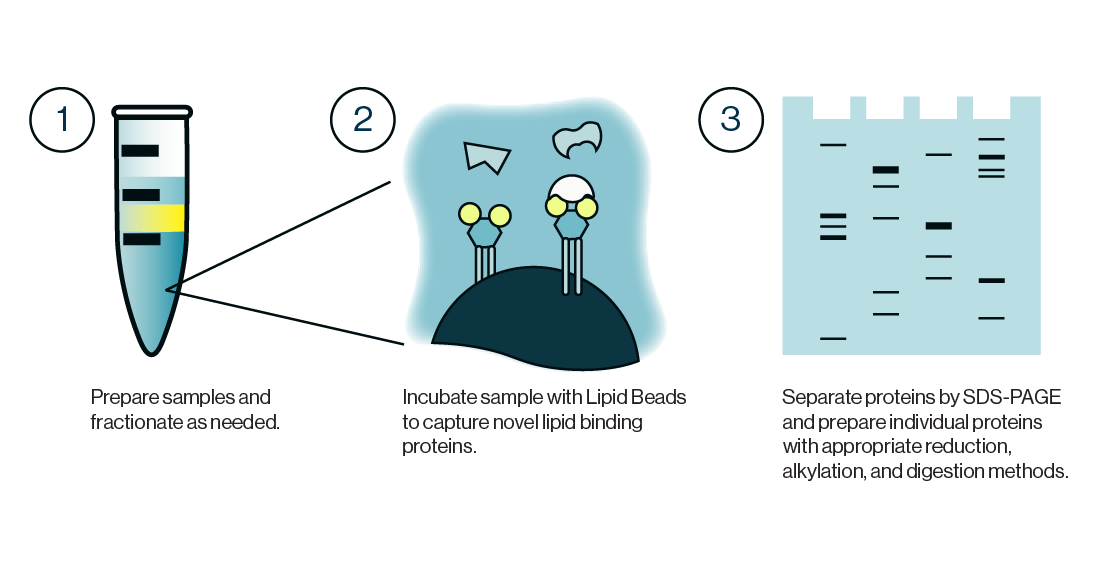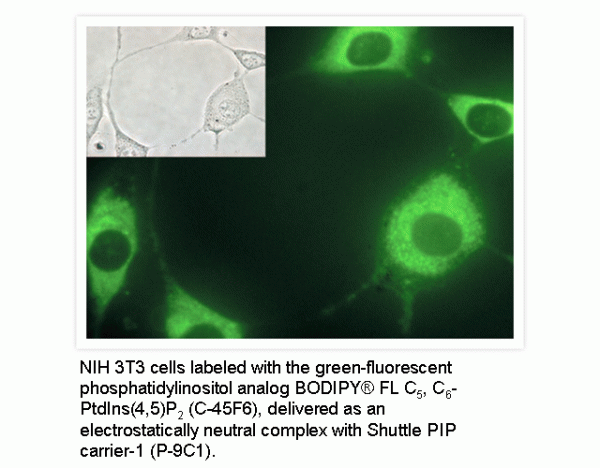Unlabeled Shuttle PIP Carrier 2 (Histone H1) has successfully delivered the following phosphoinositides into cells: PtdIns(4,5)P2, PtdIns(3,4)P2, PtdIns(3,5)P2, PtdIns(3,4,5)P3, and their fluorescent analogs.
To provide our customers with additional options in designing their own cell-delivery applications, Echelon offers fluorescent and non-fluorescent carriers as stand alone products outside our Shuttle PIP kits. Customers can use the most effective carrier for their system along with the individual fluorescent or non-fluorescent phosphoinositides of their choice.
Provided as 2 x 50 nmoles



